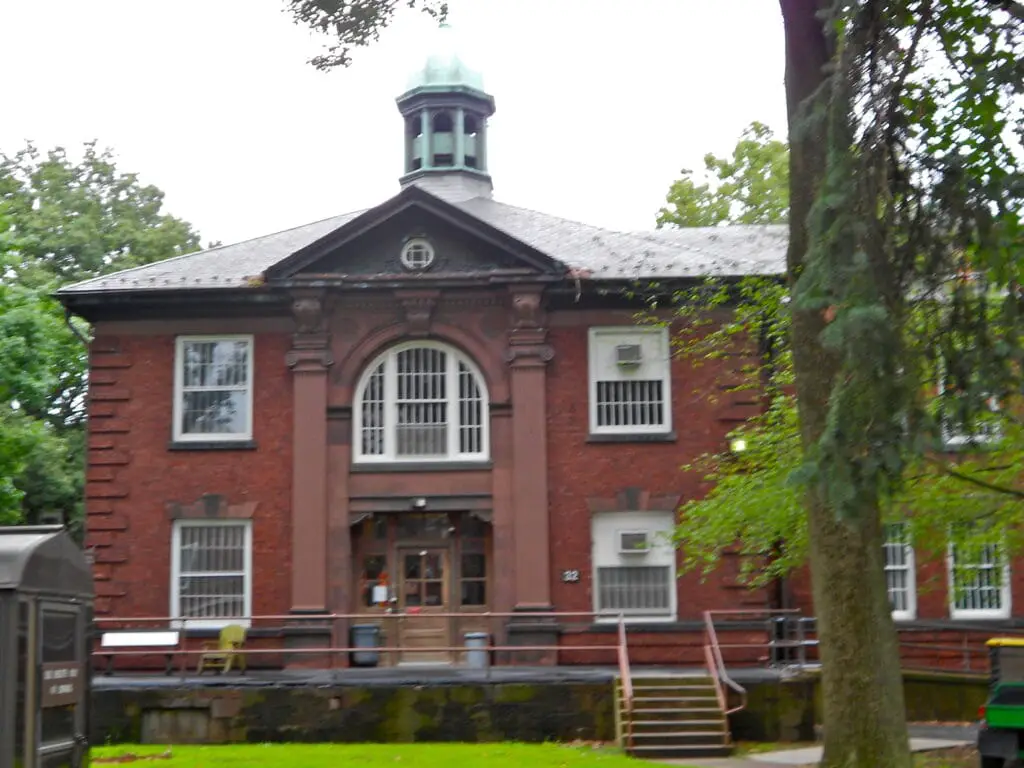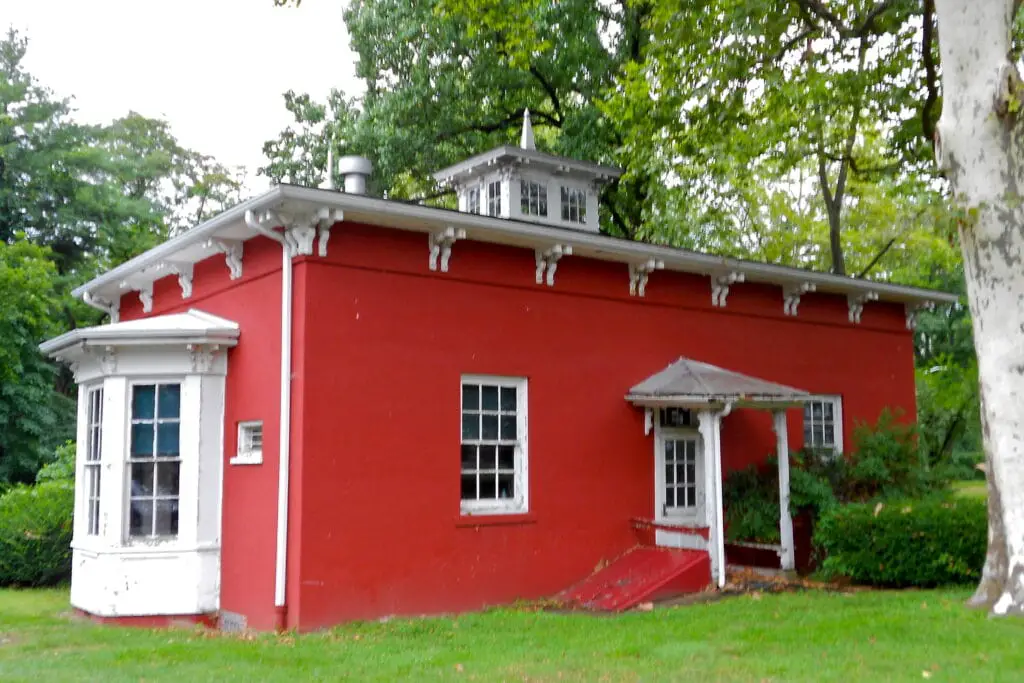A Beacon of Hope in the Mid-19th Century
In the heart of Pennsylvania, the Harrisburg State Hospital is a testament to mental health care’s evolution. Its story began in 1845 when it was established as the Pennsylvania State Lunatic Hospital and Union Asylum for the Insane, offering a haven for the mentally ill throughout the Commonwealth of Pennsylvania.
The hospital’s creation was mainly due to the tireless lobbying of 19th-century social reformer Dorothea Dix. Together with a board of trustees, they constructed a facility to redefine how society treated the mentally ill.
The hospital’s main building, designed by architect John Haviland, was the centerpiece of the hospital’s campus, following the Kirkbride Plan—a popular architectural style for mental institutions during the late 19th century.
The Evolution of Care and Expansion of the Hospital
The early years of the hospital saw a unique approach to therapy. An adjacent 130-acre farm offered patients work therapy, providing a sense of purpose and engagement. The farm also ensured self-sufficiency, as the hospital could grow food and raise livestock.
Funding for the hospital was primarily through patient fees and county expenses, with poor districts charging a weekly maintenance fee for indigent patients.
In 1869, a significant development occurred with the creation of the Board of Public Charities. This board was designed to inspect and report on all public and voluntary charitable institutions in Pennsylvania, with the critical objective of moving patients from almshouses to state hospitals.
Despite their lack of authority to correct conditions within state institutions, their persuasive tactics and publicity efforts helped improve the quality of care in public institutions.

Transformation in the 20th century
The turn of the century brought significant changes for the Harrisburg State Hospital. The once revered Main Building had become outdated, prompting a massive reconstruction following the “Cottage Plan.”
This plan, popularized at the beginning of the 20th century, expanded the hospital to include over 70 buildings across over 1,000 acres. The hospital was renamed the Harrisburg State Hospital in 1921, reflecting its expanded role and prominence.
Despite its growth, the hospital faced significant challenges during wartime, with a critical shortage of attendants. At its lowest point, there was one nurse for every 166 patients.
These staff shortages significantly reduced public and patient services, highlighting the institution’s vulnerability during trying times.

Administrative Changes and the City on the Hill
1955 was the year that marked a pivotal shift in governance when the hospital came under the administration of the Department of Public Welfare, relegating the Board of Trustees to a consultative role.
USA Quiz
How many questions would you like?
This shift had substantial implications for the hospital’s operations and the community it served.
Despite these changes, the hospital continued to thrive and was largely self-sufficient. The expansive campus, complete with its farm, power plant, and a range of stores, earned it the epithet “City on the Hill.” It stood as a testament to the resilience and resourcefulness of the institution and the community it served.
Closure, Vacancy, and Future Plans
2006 brought closure to a significant chapter in the hospital’s history when it had to cease operations. Advancements in psychiatric medicines and a broader societal shift towards deinstitutionalization significantly reduced patient numbers, making the large hospital complex untenable.
Since its closure, most buildings have remained vacant, despite numerous attempts to repurpose the site. A notable event was in 2017 when local officials proposed the site as a potential location for a new Amazon headquarters, but the bid was unsuccessful.
A subsequent agreement in 2019 with the Dauphin County Redevelopment Authority to develop the site also fell through when no development began before the deal expired in 2022.

However, the future of the site is not bleak. Recently, state officials announced plans to retain the land for official use.
Three key projects were unveiled: separating the central utility system for each building, conducting a utilization study to determine the best use for the more than 50 buildings on the 295-acre property, and constructing a scientific laboratory for state agencies. These projects reflect a commitment to making the most of this historical site while preserving its heritage.
The redevelopment is expected to be a multi-year project, with an annual maintenance cost of about $5 million. Some buildings will be restored as part of the redevelopment, while others may be demolished and rebuilt. In addition, the historical significance of the campus and each building will be considered in future planning efforts.
As Harrisburg State Hospital embarks on this new chapter, it continues to symbolize the city’s history and resilience. The transformation of this historic site will undoubtedly be watched with keen interest by those in Harrisburg and beyond.

